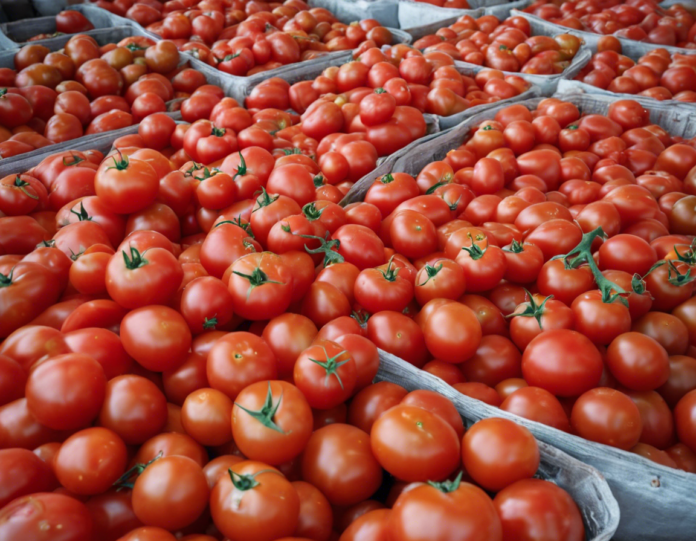When it comes to preparing delicious and nutritious meals, having fresh tomatoes on hand is a must. Whether you’re making a simple salad, a hearty pasta sauce, or a flavorful salsa, tomatoes add a burst of flavor and a nutritional punch to any dish. However, the price of tomatoes can fluctuate, making it important for savvy shoppers to stay informed about the latest deals and discounts. In this comprehensive guide, we’ll explore everything you need to know about tomato prices, including where to find the best deals, how to spot quality produce, and tips for storing your tomatoes to maximize their freshness and flavor.
The Economics of Tomato Prices
Factors Affecting Tomato Prices
Tomato prices can be influenced by a variety of factors, both natural and man-made. Some of the key factors that can impact the cost of tomatoes include:
-
Weather Conditions: Extreme weather events, such as droughts, floods, or unseasonable frosts, can damage tomato crops and lead to shortages, driving up prices.
-
Seasonal Variability: Tomatoes are a seasonal crop, with prices typically fluctuating throughout the year based on supply and demand.
-
Transportation Costs: The cost of transporting tomatoes from farms to markets can impact overall prices, especially if fuel prices rise.
-
Market Speculation: Like any commodity, tomato prices can be influenced by market speculation and supply chain disruptions.
Regional Price Variations
Tomato prices can vary significantly from region to region based on local growing conditions, transportation costs, and consumer demand. For example, tomatoes grown in greenhouse facilities may be more expensive than those grown in open fields, while imported tomatoes may have additional costs associated with international shipping.
Finding the Best Deals on Tomatoes
Shopping Tips
When it comes to finding the best deals on tomatoes, a little bit of savvy shopping can go a long way. Here are some tips to help you save money on your next tomato purchase:
-
Buy in Bulk: Purchasing tomatoes in larger quantities can often lead to discounts, especially if you’re shopping at wholesale markets or farmer’s markets.
-
Look for Sales: Keep an eye out for special promotions and sales at your local grocery store or supermarket. Many retailers offer discounts on tomatoes as part of their weekly specials.
-
Check for Imperfections: While you want your tomatoes to be ripe and firm, small imperfections like blemishes or irregular shapes won’t affect the taste and can often lead to lower prices.
-
Compare Prices: Don’t be afraid to shop around and compare prices at different stores. You may find that tomato prices vary significantly between retailers.
Online Resources
In addition to shopping in-person at your local grocery store, you can also find great deals on tomatoes through online retailers and produce delivery services. Websites like FreshDirect, Amazon Fresh, and local farm-to-table platforms often offer competitive prices on fresh produce, including tomatoes.
Ensuring Tomato Quality
Signs of Freshness
When selecting tomatoes, it’s important to choose ones that are ripe, firm, and free from blemishes. Here are some signs of freshness to look out for:
-
Color: Look for tomatoes that have a vibrant, uniform color. Avoid tomatoes that are pale or have dark spots.
-
Texture: Gently squeeze the tomato to check for firmness. It should give slightly under pressure but not be mushy.
-
Smell: A ripe tomato should have a sweet, earthy aroma. If it smells sour or musty, it may be overripe.
Storing Tomatoes
To maximize the freshness and flavor of your tomatoes, it’s important to store them properly. Here are some tips for storing tomatoes:
-
Room Temperature: Tomatoes should be stored at room temperature until they are fully ripe. Once ripe, they can be refrigerated to extend their shelf life.
-
Avoid Refrigeration: Refrigerating unripe tomatoes can cause them to lose their flavor and become mealy. Only refrigerate tomatoes once they are fully ripe.
-
Store Away from Ethylene: Tomatoes are sensitive to ethylene gas, which can cause them to ripen too quickly. Keep tomatoes away from ethylene-producing fruits like bananas and apples.
Frequently Asked Questions (FAQs)
1. Can I freeze tomatoes for later use?
Yes, you can freeze tomatoes for later use. Simply blanch and peel them, then place them in a freezer-safe container or bag. Frozen tomatoes are best used in cooked dishes like sauces and stews.
2. Are organic tomatoes worth the extra cost?
Organic tomatoes are grown without synthetic pesticides or fertilizers, making them a healthier choice for both consumers and the environment. While they may be more expensive, many people find the quality and taste of organic tomatoes to be worth the extra cost.
3. How can I ripen tomatoes quickly?
To ripen tomatoes quickly, place them in a paper bag with a ripe banana or apple. The ethylene gas produced by the fruit will help speed up the ripening process.
4. How long do tomatoes typically stay fresh?
On average, tomatoes can stay fresh for about 1-2 weeks when stored properly at room temperature or in the refrigerator. However, this can vary depending on the ripeness of the tomatoes when purchased.
5. Can I grow my own tomatoes to save money?
Yes, growing your own tomatoes can be a cost-effective way to enjoy fresh produce. With the right soil, sunlight, and care, you can cultivate your own tomato plants and enjoy a bountiful harvest throughout the season.
In conclusion, staying informed about tomato prices and finding the best deals can help you enjoy fresh and delicious tomatoes without breaking the bank. By following these tips for shopping, selecting, and storing tomatoes, you can savor the flavor of this versatile fruit in a variety of dishes. Whether you’re making a classic Caprese salad, a zesty marinara sauce, or a refreshing gazpacho, fresh tomatoes are a kitchen essential that can elevate any meal.












